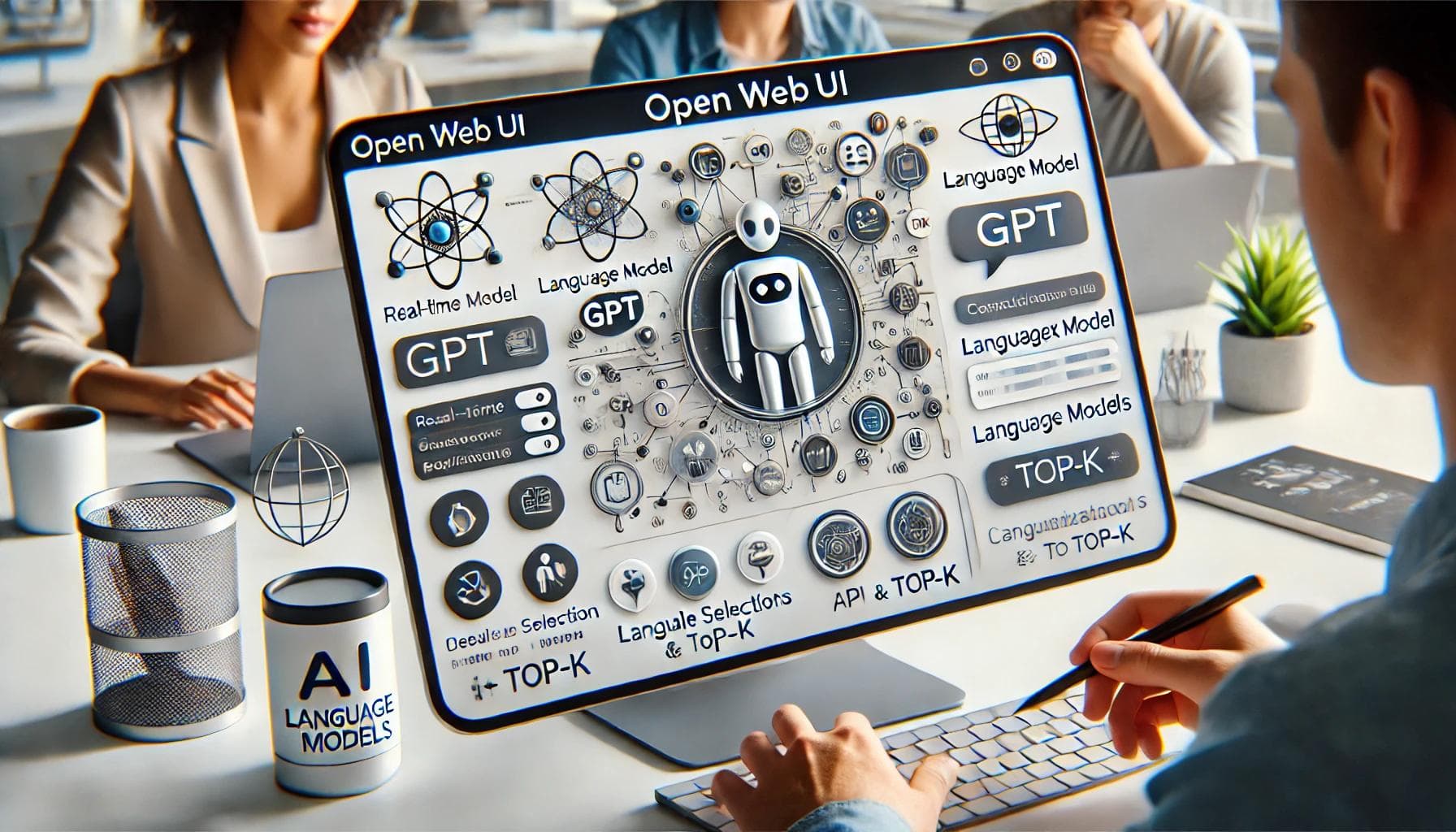Unlock the full potential of Open WebUI by exploring advanced tips, detailed steps, and sample code for load balancing, API integration, image generation, and retrieval augmented generation. Elevate your AI projects to new heights!
Introduction to Open WebUI: Unleashing the Power of Language Models
Open WebUI, previously known as Ollama WebUI, is an open-source platform designed to interact with and leverage the capabilities of large language models (LLMs) via a user-friendly web interface. Built on top of the Hugging Face Transformers library, it makes it easier for developers and researchers to explore the potential of LLMs for a wide range of natural language processing (NLP) tasks.
In this guide, we’ll walk you through how to use Open WebUI effectively, from installation to advanced integration. You’ll learn how to create a ChatGPT-like interface, use load balancing, integrate APIs, generate images, and even harness the power of Retrieval Augmented Generation (RAG) for smarter AI applications.
Key Features of Open WebUI
Open WebUI provides a comprehensive suite of features, making it an ideal choice for AI developers looking to build advanced applications with language models. Here's an overview of its key features:
- Intuitive Web Interface: The platform's simple design lets you interact with language models easily, without complex setups or coding.
- Support for Multiple Models: Open WebUI is compatible with a variety of language models, including GPT-2, GPT-Neo, and BERT, allowing you to select the best model for your needs.
- Real-time Inference: You can perform real-time inference, generating model outputs instantly based on the input provided.
- Customizable Parameters: Fine-tune outputs with adjustable parameters such as temperature, top-k, and top-p for optimal control over generation.
- API Integration: Easily integrate Open WebUI with existing applications via its robust API.
- RAG Integration: Seamlessly include local and web-based content in your model's output using Retrieval Augmented Generation (RAG).
- Image Generation: Open WebUI integrates with image generation APIs like AUTOMATIC1111 and DALL-E for a richer chat experience.
How to Install Open WebUI
To start using Open WebUI, follow these simple installation steps:
Clone the Repository:
bashCopy codegit clone https://github.com/open-webui/open-webui.git
cd open-webui
Install Dependencies:
bashCopy codepip install -r requirements.txt
Run the Application:
bashCopy codepython app.py
Access the Web Interface: Open a browser and navigate to http://localhost:5000 to interact with the Open WebUI interface.
How to Use Open WebUI
Once installed, Open WebUI lets you easily interact with the language models. Here’s how to use it:
Select a Language Model: Choose the language model you'd like to use from a dropdown menu on the interface.
Input Text: Enter your text or prompt in the provided input box.
Adjust Parameters: If desired, tweak parameters like temperature or top-p to control output creativity.
Generate Output: Hit "Generate" to see the model's response.
Refine Your Results: Modify the input and parameters as needed to perfect the output.
How to Create a ChatGPT-like UI for Your AI Projects
If you want to integrate Open WebUI into a ChatGPT-like user interface for your projects, follow these steps:
Set Up the Project: Initialize a new React project with create-react-app.
Install Dependencies: Install react-chat-ui and axios for managing chat components and API communication.
Create the Chat Component: Design a chat interface that handles user inputs and displays model responses.
Integrate with Backend API: Use axios to connect the chat interface with Open WebUI's backend.
Style the Chat Interface: Customize the UI to make it user-friendly and visually appealing.
Test and Refine: Run the application and refine it based on user interactions and feedback.
By following these steps, you can create a professional, ChatGPT-like interface for your AI applications.
Advanced Tips for Using Open WebUI
Ollama Load Balancing with Open WebUI
To improve performance and reliability, you can configure Open WebUI to use multiple Ollama instances. This ensures that your system can handle increased traffic by distributing the workload.
Example for Docker:
bashCopy codedocker run -d -p 3000:8080 \
-v open-webui:/app/backend/data \
-e OLLAMA_BASE_URLS="http://ollama-one:11434;http://ollama-two:11434" \
--name open-webui \
--restart always \
ghcr.io/open-webui/open-webui:main
OpenAI API Integration with Open WebUI
Open WebUI also supports integration with multiple OpenAI (or compatible) API endpoints. This allows you to switch between providers or run multiple models in parallel.
Example for Docker:
bashCopy codedocker run -d -p 3000:8080 \
-v open-webui:/app/backend/data \
-e OPENAI_API_BASE_URLS="https://api.openai.com/v1;https://api.mistral.ai/v1" \
-e OPENAI_API_KEYS="<API_KEY_1>;<API_KEY_2>" \
--name open-webui \
--restart always \
ghcr.io/open-webui/open-webui:main
Image Generation with Open WebUI
Open WebUI integrates with multiple image-generation APIs, including:
- AUTOMATIC1111 (Stable Diffusion)
- DALL-E (by OpenAI)
Follow the steps to integrate these APIs and enhance your chat interactions with generated images.
Retrieval Augmented Generation (RAG) with Open WebUI
RAG combines multiple sources of data to enhance the quality of model outputs. To use RAG with Open WebUI:
Upload Local Documents: Add local files to the "Documents" section of Open WebUI.
Include Web Content: Start your prompt with # followed by a URL, and Open WebUI will fetch and use that content in the generation.
Sample Code for Web Content Fetching:
pythonCopy codeimport requests
from bs4 import BeautifulSoup
url = "https://example.com/article"
response = requests.get(url)
soup = BeautifulSoup(response.text, "html.parser")
content = soup.find("div", class_="article-content").get_text()
print(content)
Conclusion
Open WebUI offers a seamless and powerful platform for building and interacting with large language models. With its intuitive web interface, API integration, customizable parameters, and advanced features like RAG and image generation, Open WebUI makes it easy to create cutting-edge AI applications.
FAQ
What models are supported by Open WebUI?
Open WebUI supports several popular models, including GPT-2, GPT-Neo, and BERT.
How can I integrate Open WebUI with my existing applications?
You can easily integrate Open WebUI via its API, allowing for smooth interaction with your language models in any project.
What is Retrieval Augmented Generation (RAG)?
RAG is a technique that combines information from multiple sources to provide more accurate and contextually relevant outputs in AI-driven applications.
Generate Images, Chat with AI, Create Videos.
No credit card • Cancel anytime

